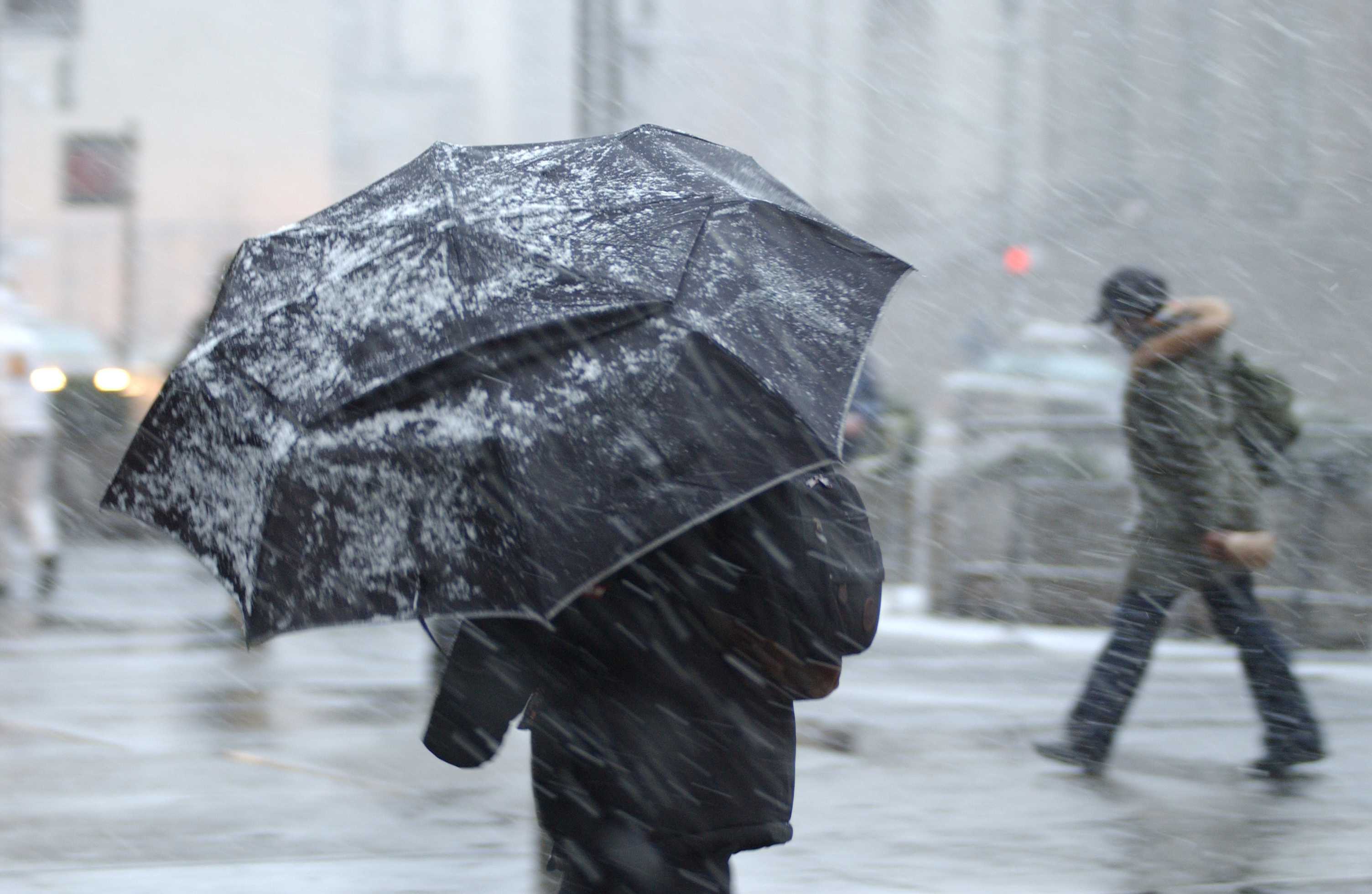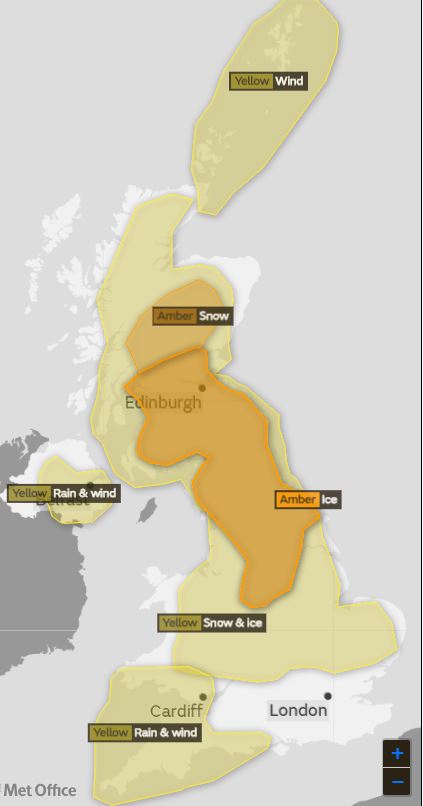
SCOTS are being warned to brace themselves for heavy freezing rain developing across the weekend.
The Met Office has upgraded some of their weather warnings, put in place yesterday, from yellow to amber.
The forecaster has warned of the rapid formation of widespread ice on roads, pavements, trees and other structures.
An amber warning for snow is in place for parts of north central Scotland, while the alert for ice covers the central belt, parts of Fife and Stirlingshire and most of the south.
Yellow warnings remain in place across the rest of the country for snow and wind.
A spokesperson said: “Freezing rain is rare in the United Kingdom but when it does occur the impacts can be very severe. This is due to the fact that it can form very quickly, it can be difficult to see and is incredibly slippery.
“Some sleet and snow is possible over the very highest ground and the freezing rain may also be followed by a spell of sleet and snow as the precipitation clears from the west.
“The freezing rain and sleet and snow will be accompanied by strong southeasterly winds which will pose an additional hazard to travel, in particular over high ground.”
Chief Meteorologist Steve Willington added: “This weekend’s weather brings a range of winter hazards, with the possibility of heavy snow and blizzards in parts of Scotland and freezing rain for northern parts of the UK.
“As such, there is the potential for disruption to travel on the roads and possible delays or cancellations to public transport services, so we encourage people to keep an eye on the latest weather forecast and warnings and to take care when travelling.”
“At the moment, the heaviest snow is expected over higher ground in Scotland with the chance of drifting snow due to strong winds. Snow is also expected to settle at lower levels in Scotland and parts of northern England, with the risk of freezing rain and ice on Saturday night.”
Freezing rain
This weather phenomenon sees precipitation fall as snow initially, which then melts (turning to rain and drizzle) as it falls through milder air and then at the surface it will then re-freeze into drops of freezing rain.
When snow falls onto ground with a temperature below freezing it gradually accumulates. When freezing rain comes into contact with a cold surface it glazes it in ice.

Enjoy the convenience of having The Sunday Post delivered as a digital ePaper straight to your smartphone, tablet or computer.
Subscribe for only £5.49 a month and enjoy all the benefits of the printed paper as a digital replica.
Subscribe